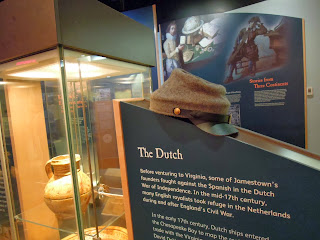Established by the Virginia Company of London as "James Fort" on May 14, 1607, it was the first permanent English settlement in what is now the United States. It would serve as capital of the colony for 83 years (from 1616 until 1699).
Late in 1606, English entrepreneurs set sail with a charter from the Virginia Company of London to establish a colony in the New World. After a particularly long voyage of five months duration including stops in Puerto Rico, they finally departed for the American mainland on April 10, 1607. The three ships, named Susan Constant, Discovery, and Godspeed, under Captain Christopher Newport, made landfall on April 26, 1607 at a place they named Cape Henry.
On May 14, 1607, Captain Edward Maria Wingfield, elected president of the governing council on April 25, selected a piece of land on a large peninsula, some 40 miles (64 km) inland from the Atlantic Ocean, as a prime location for a fortified settlement. The Peninsula was surrounded by the York river in the north, the James river in the south and the Chesapeake bay in the east of the peninsula. The piece of land had deep water, making it a navigable and defensible strategic point.
(Source: Wikipedia)
Late in 1606, English entrepreneurs set sail with a charter from the Virginia Company of London to establish a colony in the New World. After a particularly long voyage of five months duration including stops in Puerto Rico, they finally departed for the American mainland on April 10, 1607. The three ships, named Susan Constant, Discovery, and Godspeed, under Captain Christopher Newport, made landfall on April 26, 1607 at a place they named Cape Henry.
On May 14, 1607, Captain Edward Maria Wingfield, elected president of the governing council on April 25, selected a piece of land on a large peninsula, some 40 miles (64 km) inland from the Atlantic Ocean, as a prime location for a fortified settlement. The Peninsula was surrounded by the York river in the north, the James river in the south and the Chesapeake bay in the east of the peninsula. The piece of land had deep water, making it a navigable and defensible strategic point.
(Source: Wikipedia)

































